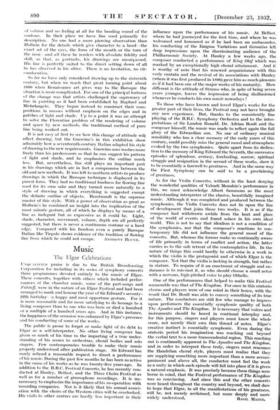Art
Old Master Drawings THE exhibition of drawings now on view at the Galleries of Tomas Harris in Bruton Street covers all periods from the fifteenth to the nineteenth century and includes works of most of the important European schools. One of the points which comes out most clearly from this exhibition is that the Italian and the Northern schools have fundamentally different attitudes towards drawing.
The Italians never wholly freed themselves from the Tuscan heritage which led them to concentrate on what we may call the abstract as opposed to the descriptive qualities of drawing. These abstract qualities are two : the use of an elegant, flowing line pleasing in itself quite apart from anything it may represent ; and the use of line to suggest volume. The former of these qualities was common to the Sienese and the Florentine schools though it is more evident in the works of the former. During the great period of Sienese art the fourteenth-century painters such as Duccio and Simone Martini exploited elegance of line almost to the exclusion of all other qualities. The same elegance combined with many other qualities appears in the drawings of Florentine artists such as Botticelli at a time when the Sienese school had sunk to a position of secondary importance in Italian art and it was by this descent that it was transmitted to later Italian painting, attaining its highest expression in Michelangelo, though here again it was combined with many other draughtsmen's qualities.
The use of line to express volume was essentially a Florentine practice. Giotto seems to have started the idea that the rendering of solidity was one of the primary objects of painting, and Masaccio carried it on so that in the fifteenth century it became the preoccupation of Florentine painters. It is im- possible to say exactly how drawing alone can suggest volume, but certainly some artists have discovered the secret. Not only Italian but more recent draughtsmen such as Ingres and Picasso have known how to choose exactly the right line to suggest that the form goes on round the corner beyond the limit of actual vision.
These, then, are the essential qualities of Florentine drawing during the fifteenth and sixteenth centuries, but if now we turn to the work of a northerner like Holbein we shall find an entirely different method. In a portrait drawing by Holbein we shall detect no flowing line, only the minimum suggestion of volume and no feeling at all for the bending round of the contour. In their place we have line used primarily for description. No one had a more piercing observation than Holbein for the details which give character to a head—the exact set of the eyes, the form of the mouth or the turn of the nose—and all these he renders with absolute fidelity and skill, so that, as portraits, his drawings are unsurpassed. His line is perfectly suited to the direct setting down of all he has observed in his sitter. There is no hesitation, no cir- cumlocution. • So far we have only considered drawing up to the sixteenth century, but when we reach that great turning point about 1600 when Renaissance art gives way to the Baroque the situation is more complicated. For one of the principal features
of the change was that artists challenged the supremacy of line in painting as it had been established by Raphael and Michelangelo. They began instead to construct their com- positions in masses without emphasis on the edges and in patches of light and shade. Up to a point it was an attempt to solve the Florentine problem of the rendering of volume and space by new methods, the traditional method of pure line being worked out.
It is not easy at first to see how this change of attitude will affect drawing, but the Guereino's in this exhibition show admirably how a seventeenth-century Italian adapted his style of drawing to the new requirements. Guercino uses washes more freely than his predecessors so that he can suggest his pattern of light and shade, and he emphasises the outline much less. But, nevertheless, line still plays an important part in his drawings which are in fact a compromise between the old and new methods. It was left to northern artists to produce drawings in which the Baroque technique is displayed in AS purest form. They had no traditional fondness for flowing line used for its own sake and they turned more naturally to a style of drawing in which everything is suggested except the• definite outline of objects. Rembrandt is the supreme master of this style. With a power of observation as great as Holbein's he combined an insight into the implication of the most minute gesture, all of which he displays by means of a line as inelegant but as expressive as it could be. Light, shade, character, movement, volume; depth are all perfectly suggested, but there is never a continuous contour or a hard edge. Compared with his freedom even a purely Baroque Italian like Tiepolo shows evidence of the tradition of flowing
line from which he could not escape. ANTHONY BLUNT.



























 Previous page
Previous page